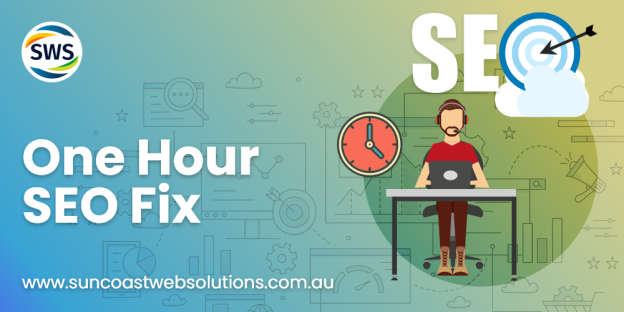7 SEO Mistakes That Might Be Ruining Your Site in 2024

 4th Nov, 2024
4th Nov, 2024
In 2024, the significance of SEO cannot be overstated. With ever-evolving algorithms and increasing competition, optimizing your website for search engines is essential for maintaining visibility and driving traffic. Effective SEO strategies not only improve website performance but also enhance user experience, making it crucial for businesses to stay ahead.
However, several common SEO mistakes can hinder your efforts. Here are some top SEO mistakes to avoid:
- Lack of Keyword Research: Targeting the wrong terms can result in lost traffic opportunities.
- Thin or Duplicate Content: Low-quality or duplicate pages struggle with search rankings.
- Poor Site Structure: An unorganized site affects crawlability and user experience.
- Keyword Stuffing: Overusing keywords can harm rather than help your rankings.
- Ignoring Local SEO: Neglecting local strategies may lead to missed customer opportunities.
Addressing these issues ensures that your website not only meets search engine standards but also provides value to users. Understanding these pitfalls is the first step toward a successful SEO strategy in 2024. It’s beneficial to consult with professionals who specialize in internet marketing to avoid these common mistakes and optimize your online presence effectively.
1. Lack of Keyword Research
Keyword research is the process of identifying the terms and phrases that potential customers use when searching for products or services online. This foundational step in SEO allows you to align your content with user intent, ensuring that your website attracts relevant traffic.
Targeting the wrong keywords can lead to significant consequences:
- Lost Traffic Opportunities: If you’re optimizing for keywords that do not match user searches, your content may fail to appear in search results.
- Low Engagement Rates: Visitors who land on your site may quickly leave if they do not find what they were looking for, leading to higher bounce rates.
- Wasted Resources: Time and effort spent creating content around ineffective keywords could be better allocated toward more relevant topics.
To avoid these pitfalls, employing effective tools and techniques is essential:
- Google Keyword Planner: A free tool that helps identify keyword volume and competition levels.
- Ahrefs or SEMrush: These paid tools offer in-depth analysis of keywords, including related terms and their performance metrics.
- Competitor Analysis: Reviewing which keywords competitors rank for can provide insights into effective target terms.
- Long-Tail Keywords: Focus on specific phrases that may have lower search volumes but higher conversion potential. These often reflect more precise user intent.
Investing time in thorough keyword research sets the stage for a successful SEO strategy, improving your site’s visibility and relevance in search engine results.
2. Thin or Duplicate Content
Understanding the difference between thin content and duplicate pages is crucial for effective SEO.
1. Thin Content
Refers to web pages that offer little to no value, often containing minimal text or information. Examples include:
- Pages with only a few sentences
- Low-quality affiliate pages
- Automatically generated content
2. Duplicate Content
Involves identical or very similar content appearing on multiple URLs. This can arise from:
- URL variations (e.g., http vs. https)
- Printer-friendly versions of pages
- Content copied from other sites
Both thin and duplicate content negatively impact search rankings and user experience. Search engines prioritize unique, valuable content that engages users. Websites with low-quality material may experience:
- Decreased visibility in search results
- Lower click-through rates
- Higher bounce rates as users quickly leave
To combat these issues, focus on strategies that create valuable and unique content:
- Conduct Research: Understand your audience’s needs and interests. This informs the creation of relevant, engaging material.
- Expand Existing Content: Enhance thin pages by adding detailed information, visuals, or user experiences.
- Implement Original Ideas: Share personal insights, case studies, or expert interviews to differentiate your content.
- Use Tools: Leverage tools like Copyscape or Grammarly to identify duplicate content and ensure originality.
Prioritizing unique content fosters a better user experience while boosting your site’s SEO performance.
3. Poor Site Structure
A well-organized site structure is crucial for both user experience and search engine optimization. An intuitive layout helps visitors navigate your site seamlessly, while search engines rely on clear architecture to crawl and index pages effectively.
Common Structural Issues that Harm SEO
- Deeply Nested Pages: When valuable content is buried several clicks deep, users struggle to find it, and search engines may overlook it.
- Lack of Internal Linking: Insufficient internal links can lead to missed opportunities for spreading link equity and guiding users through related content.
- Unclear Categories and Tags: Ambiguous or inconsistent categorization can confuse users and hinder search engines from understanding the site hierarchy.
Best Practices for Optimizing Site Architecture
- Create a Logical Hierarchy: Organize your content into main categories and subcategories. This clear hierarchy improves user navigation and enhances crawlability.
- Use Descriptive URLs: URLs should be concise yet descriptive, helping both users and search engines understand the page’s content at a glance.
- Implement Breadcrumbs: Breadcrumbs provide users with a trail of links back to the home page, enhancing usability while aiding search engines in determining site structure. This is an effective strategy to optimize your website as discussed in this article.
- Optimize Navigation Menus: Ensure navigation menus are simple and highlight key areas of your site, allowing visitors to find what they need quickly.
Investing time in optimizing your site’s structure will not only enhance user experience but also improve your chances of ranking higher in search results.
4. Avoiding Keyword Stuffing
Keyword stuffing refers to the practice of overusing specific keywords in your content to manipulate search engine rankings. This outdated practice can lead to several negative consequences:
- Poor User Experience: Content that feels forced or unnatural tends to frustrate readers, leading them to leave your site quickly.
- Search Engine Penalties: Search engines like Google aim to prioritize high-quality, relevant content. Excessive keyword use can trigger penalties, resulting in lower rankings.
Emphasizing natural language usage is essential for effective content creation. Quality content resonates more with users and search engines alike. Here are some techniques for integrating keywords strategically without overuse:
- Focus on Context: Use keywords within meaningful context. Ensure that they fit seamlessly into the narrative rather than appearing as an afterthought.
- Utilize Synonyms and LSI Keywords: Latent Semantic Indexing (LSI) keywords are terms related to your main keyword. Incorporating these enhances relevance while avoiding redundancy.
- Maintain Readability: Aim for a natural flow in your writing. Tools like Grammarly or Hemingway can help you assess readability, ensuring that your content remains engaging.
- Employ Heading Tags Wisely: Use headings (H1, H2, etc.) to organize your content and include relevant keywords where appropriate. This strategy not only aids SEO but also improves user navigation.
By focusing on authentic, valuable content while utilizing strategic keywords, you can enhance both user experience and search visibility without falling into the trap of keyword stuffing.
5. Ignoring Local SEO
Local SEO focuses on optimizing your online presence to attract more business from relevant local searches. For businesses that serve specific geographic areas, local SEO is vital for connecting with potential customers nearby. It ensures your website appears in local search results, making it easier for local customers to find you.
Common Pitfalls in Local SEO Strategies
- Neglecting Google My Business: Failing to set up or optimize your Google My Business profile can significantly reduce your visibility in local searches.
- Inconsistent NAP Information: Your Name, Address, and Phone Number (NAP) must be consistent across all online platforms. Inconsistencies can confuse search engines and harm rankings.
- Ignoring Local Keywords: Not incorporating localized keywords into your content can lead to missed opportunities for attracting nearby customers.
Tips for Improving Local Search Visibility
- Optimize Your Google My Business Listing: Fill out all information accurately, including hours of operation, services, and photos. Encourage customer reviews to boost credibility.
- Utilize Local Keywords: Research and integrate relevant local keywords throughout your website’s content. Focus on phrases that reflect geographic targeting.
- Create Location-Specific Content: Develop blog posts or landing pages tailored to specific locations you serve. This helps demonstrate relevance and authority within those areas.
- Build Local Citations: List your business on local directories and ensure that NAP information is consistent across all platforms.
Taking these steps can make a significant difference in enhancing your local search visibility, ultimately driving more traffic from nearby customers.
6. Bad Redirects and Broken Links
Bad redirects happen when a webpage sends users to another page that doesn’t have the expected content or shows an error page instead. These redirects can seriously harm your SEO performance by creating a bad user experience and giving search engines the impression that your site is poorly maintained.
Effects of Bad Redirects
- Loss of Link Equity: Incorrectly configured redirects can lead to dilution of link equity, negatively affecting rankings.
- Increased Bounce Rate: Users encountering unexpected redirects are likely to leave your site, increasing bounce rates and reducing engagement metrics.
Impact of Broken Links
Broken links make it difficult for users to navigate, frustrate them, and damage your credibility. When a website has many broken links, it gives the impression of neglect, which search engines interpret as a sign of low-quality content. This can result in:
- Lower Rankings: Search engines may penalize sites with numerous broken links.
- Reduced Trust: Users are less likely to return to a site they perceive as unreliable.
Tools for Identifying and Fixing Link Issues
There are several tools available that can help you find broken links and redirect problems:
- Google Search Console: Offers insights into crawl errors and broken links on your site.
- Screaming Frog: A website crawler that identifies broken links and provides detailed reports.
- Ahrefs: An invaluable tool for analyzing backlinks and discovering any issues with redirects.
Regularly checking your website for bad redirects and broken links is important for providing a good user experience and improving your SEO performance in 2024. Keeping your link profile clean is essential for maintaining traffic and boosting the overall authority of your site.
7. Neglecting Mobile Optimization
In today’s digital landscape, mobile optimization is not optional. With the rise of mobile-first indexing, search engines prioritize mobile-friendly sites in their rankings. A responsive design enhances user experience on mobile devices, leading to higher engagement and conversion rates.
Common Mobile Optimization Mistakes to Avoid
- Ignoring Responsive Design: Websites that do not adapt to different screen sizes can frustrate users, resulting in high bounce rates.
- Slow Load Times: Heavy images or unoptimized scripts can slow down page loading. Users expect fast access to information on their mobile devices.
- Difficult Navigation: Complex menus or tiny buttons make it hard for users to navigate on smaller screens, negatively impacting their experience.
Best Practices for Ensuring a Seamless Mobile Experience
- Prioritize Speed: Use tools like Google PageSpeed Insights to analyze and improve load times. Compress images and leverage browser caching.
- Simplify Navigation: Implement clear, concise menus that are easy to use on touchscreens. Consider using hamburger menus for better accessibility.
- Test Regularly: Utilize emulators and real devices to test your website’s performance across various mobile platforms. Tools like BrowserStack can be beneficial for comprehensive testing.
Emphasizing mobile optimization is essential for reaching a broader audience and improving your SEO performance in 2024. With the increasing reliance on smartphones, ensuring your site is mobile-friendly will set you apart from competitors who overlook this vital aspect of SEO.
Conclusion
Addressing SEO mistakes is crucial for enhancing your website’s visibility and driving organic traffic. By focusing on effective strategies, you can significantly improve rankings and ensure a better user experience. Here are essential steps to develop a robust SEO strategy moving forward:
- Conduct thorough keyword research: Identify the right keywords that align with your audience’s search intent. Utilize tools like Google Keyword Planner or SEMrush to guide your efforts.
- Create unique and valuable content: Focus on providing high-quality, original content that addresses user needs. This not only helps in avoiding duplicate content issues but also enhances engagement.
- Optimize site structure: Ensure your site is organized logically, making it easy for both users and search engines to navigate.
- Integrate keywords naturally: Avoid keyword stuffing by using keywords strategically within contextually relevant content. Aim for a natural flow in your writing.
- Monitor performance regularly: Utilize analytics tools to track your site’s performance and make data-driven adjustments as necessary.
By being proactive and addressing these common pitfalls, you can effectively avoid SEO mistakes that might be ruining your site in 2024. Prioritize a comprehensive approach to enhance your online presence and achieve sustained growth.
FAQs (Frequently Asked Questions)
What are the common SEO mistakes that might be ruining my site in 2024?
Some of the common SEO mistakes include lack of keyword research, thin or duplicate content, poor site structure, keyword stuffing, ignoring local SEO, bad redirects and broken links, and neglecting mobile optimization. Addressing these issues can significantly improve your site’s performance and visibility.
Why is keyword research important for my website’s SEO?
Keyword research is crucial because it helps identify target terms that potential visitors are searching for. Targeting the wrong keywords can result in lost traffic and lower search engine rankings. Utilizing effective tools and techniques for keyword research can enhance your content strategy.
What is the difference between thin content and duplicate content?
Thin content refers to pages with little or no valuable information, while duplicate content involves multiple pages containing the same or very similar information. Both can negatively impact search rankings and user experience. Creating unique, high-quality content is essential for SEO success.
How does poor site structure affect my website’s SEO?
An organized site structure is vital for both user experience and search engine crawlability. Poor site architecture can lead to difficulties in navigation, which may harm your site’s visibility in search results. Implementing best practices for optimizing site structure can significantly enhance your SEO efforts.
What are the consequences of keyword stuffing?
Keyword stuffing involves overusing keywords in your content to manipulate search rankings. This outdated practice can result in penalties from search engines and a negative user experience. Instead, focus on integrating keywords naturally within your content.
Why should I pay attention to local SEO for my business?
Local SEO is essential for businesses targeting geographic customers. Ignoring local SEO can lead to missed opportunities in attracting local clientele. Common pitfalls include not optimizing Google My Business listings or failing to use local keywords effectively. Improving local search visibility can drive more relevant traffic to your site.
we are your one-stop internet marketing solution on the sunshine coast!

 07 5479 3888
07 5479 3888









